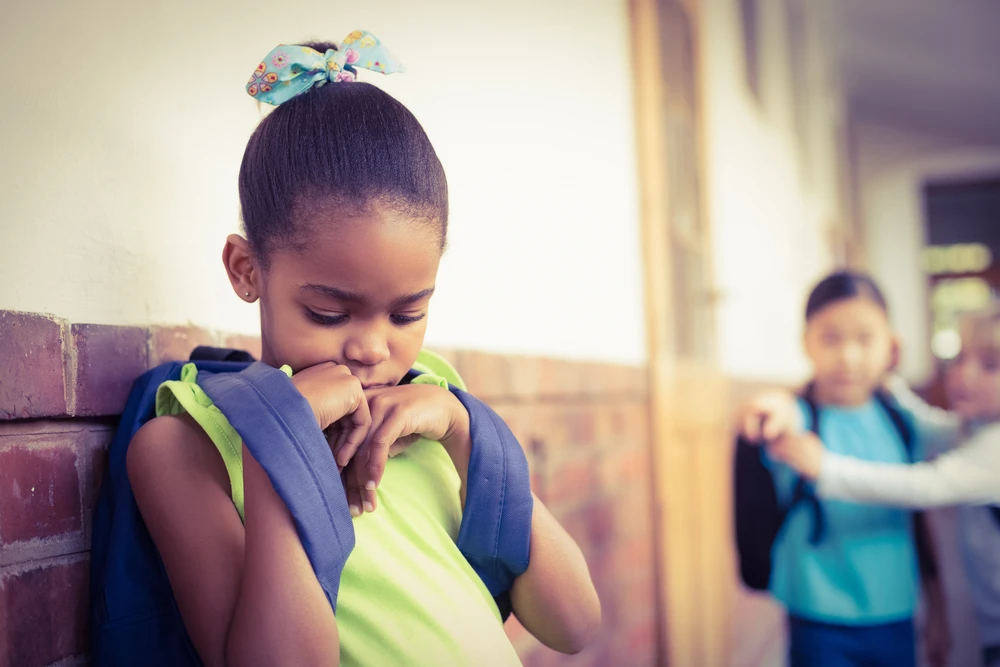Bullying is a widespread issue that affects people across different ages and generations. It’s crucial for parents and educators to understand how to identify signs of bullying in children early on. Addressing these behaviors promptly can prevent long-term negative consequences such as low self-esteem, substance abuse, depression, and violence.

Bullying refers to intentional and repeated aggressive behavior that causes physical, verbal, or emotional harm to another person. It can manifest in various forms and is often sustained over time by the same perpetrator targeting the same victim.
Recognizing bullying is essential, starting from childhood when children are shaping their perceptions of others and forming their personalities. Traditional forms of bullying include verbal, social, and physical aggression, which can be observed firsthand by those within the same environment. However, some bystanders may overlook these behaviors, considering them as someone else’s problem or even believing that the victim deserves it.
Types of Bullying
Understanding the types of bullying is crucial for effective identification:
1. Physical Bullying:
Physical bullying is evident through actions like hitting, kicking, pushing, or damaging another person’s belongings.
2. Social Bullying:
Social bullying involves exclusion, where a child or group deliberately excludes another from activities or friendships. It also includes spreading rumors or embarrassing someone publicly.
3. Cyberbullying:
With the rise of social media, cyberbullying has become a significant concern. It occurs online through platforms like social media, chat rooms, or text messages. Cyberbullying can be particularly challenging to control due to the lack of physical barriers, making it easier for bullies to harm their victims anonymously.

Possible Signs your child is being bullied
Detecting bullying can indeed be challenging, especially when it’s hidden, which digital media often facilitates. However, there are signs that can help parents, teachers, and peers recognize if a child is being bullied. These signs include:
- Fear of going to school or specific classes.
- Regularly losing belongings.
- Physical injuries or unexplained bruises.
- Nervousness or anxiety.
- Decreased confidence.
- Withdrawal or distress.
- Decline in academic performance.
- Changes in eating or sleeping habits.
- Damaged books or clothes.
- Engaging in bullying behavior themselves, including retaliation.
- Expressing suicidal thoughts or attempting self-harm.
By being aware of these indicators and maintaining open communication with children, we can better identify and address bullying situations to ensure the safety and well-being of all involved.
How to stop Bullying in School
In the school setting, it’s important to promote anti-bullying behavior among children. Here are some examples:
- Encouraging friendly expressions and attitudes.
- Offering compliments to others.
- Smiling often.
- Sharing laughter at others’ jokes.
- Practicing kindness and empathy.
- Ensuring everyone is included in activities.
- Fostering modesty and humility.
- Providing equal opportunities for all children to participate in school activities.
By nurturing these positive behaviors, schools can create a supportive environment where bullying is less likely to occur, and all students feel valued and respected.
It’s crucial for teachers, parents, and children to be well-informed about the signs of bullying. Early detection allows for prompt intervention before these behaviors escalate into negative social patterns for the bullies or cause mental and psychological distress for the bullied.
Moreover, it’s essential for all of us to be more mindful of such behaviors in our surroundings. Understanding the impact of our actions on others can help create a more supportive and empathetic environment for everyone. By fostering awareness and empathy, we can work towards preventing bullying and promoting positive interactions among peers.
Read also:
- Verydarkman Accuses Ex-Guinness World Record Holder Hilda Baci of Fraud, Shares Video Proof
- Dana Air Confirms Runway Incident at Lagos Airport
- Think Before You Post: NPF PRO Ademuyiwa Adejobi Warns Nigerians
- New Age Limit for UTME Candidates Announced by FG: Here’s Why
- Viral video of bullying in popular Abuja private school sparks outcry
- Bobrisky appeals against sentence, wants court to replace each count with ₦50k
- FCCPC shuts down Abuja Chinese Supermarket that discriminates against Nigerians
- APC Announces Lucky Aiyedatiwa as Winner of Ondo Governorship Primary Election: Full Results Unveiled
- Guinness World Record: Davido Boosts Nigerian Chess Master Onakoya’s Guinness World Record Bid in New York
- The fear of EFCC: Video of Cubana Chiefpriest at a party spending money days after his court case
- Toyin Abraham Extends Friendship to Funke Akindele to end rivalry



